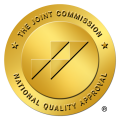Spotting and Treating Adverse Childhood Experiences in your Patients
Adverse childhood experiences can have a significant impact on adulthood and addiction. Here is what you need to know about ACEs and how to spot and treat them.
Article Contents
What is ACE?
ACE stands for “adverse childhood experience.” These experiences are traumatic events that a person may have been exposed to between the ages of zero to seventeen when an individual is most vulnerable to these types of events.
Adverse childhood experiences (ACEs) are common in modern society. A CDC survey found that about 61% of U.S. adults they questioned experienced at least one form of ACE. Moreover, one in six reported four or more types of ACEs over their entire childhood.1
Forms of Adverse Childhood Events
There are nine forms of adverse childhood events:
- Physical abuse
- Mental illness in a household member
- Exhibited alcohol abuse by a household member
- Emotional abuse
- Witnessing domestic violence against a parent, most typically the mother
- Separation or divorce of parents
- Drug misuse (either illegal street or prescription) by a household member
- Sexual abuse
- Incarceration of a household member
An ACE score can be calculated to see the number of exposures an individual has had throughout their childhood. NPR offers a self-evaluation, or “Ace Quiz,” so that a person can find out their ACE score and its potential impact on their health.2
Any one of these experiences can potentially have a serious impact on the physical and mental wellbeing of an individual, even years or decades after the fact. However, the higher the ACE score, the more likely that person will experience negative consequences as a result.
The Causes of ACE
Abuse
Abuse in any form is traumatic and stressful for children. The most common types of abuse that children face include physical, emotional, and sexual abuse. In later years, children who were abused are far more likely to abuse substances and have other forms of unhealthy coping. One ACE study showed as many as two-thirds of people who seek treatment report being abused in some form as a child.3Neglect
Many of these ACEs can result in the neglect of a child. For example, drug misuse or physical abuse can result in a child being forced to care for themselves. It can also cause them to not have the basics that they need, such as food or clean clothes.
Household Dysfunction
A child’s environment can have as much of an effect on their stress levels as what happens to them. Household dysfunction can create a profound impact that continues to affect an individual into adulthood.
Mental Illness
Mental illness, such as severe depression, anxiety, and schizophrenia, can make caring for another person, especially a child, extremely difficult. Children with household members with mental illness often find that they need to grow up and care for themselves fairly quickly.
Divorce
The separation of parents and all that it might entail can be traumatic for a child. Depending on the circumstances of the divorce, a child may suddenly see much less of one parent, or even not at all. This shift in the basic stable relationships of young children can cause them significant distress.
Substance Abuse
One of the main challenges of ACEs is how it continues down the generations. This aspect is especially true when it comes to substance abuse. One ACE study found that children of substance abuse were eight times more likely to have the same issue.4
Incarcerated Relative
Incarceration of a family member is akin to death: a stable person in a child’s life is taken away, sometimes for years. It also contributes to future generations of ACEs, and those with an ACE score of four or higher are twenty times more likely to become incarcerated themselves.5
Symptoms of Adverse Childhood Experiences

The toxic stress of adverse childhood experiences can manifest in several signs and symptoms both as a child and during adulthood. Some of the most common are:
- Anger and mood swings
- Anxiety and fear
- Guilt and self-blame
- Withdrawal
- Sleep disorders
- Ptsd
- Fatigue
- Difficulty concentrating
Consequences of ACEs
There are a few consequences that can come as a result of adverse childhood events. Some of these outcomes include:
Toxic Stress
The National Scientific Council on the Developing Child came up with the term “toxic stress” at the beginning of the 2000s.6 They used the phrase to explore the extensive science behind the effects of excessive activation of the stress response systems while a child is developing.
When a child experiences an ACE, it triggers a reaction from the stress response system. The more childhood trauma a person experiences, the more times this toxic stress response is activated and can have a wear-and-tear effect on the mind and body.
Health Conditions
Studies have linked high ACEs with a number of physical health conditions, including heart disease, cancer, and type II diabetes. Although the research is unclear whether it is because ACE fuels unhealthy behaviors or causes these conditions directly, childhood trauma clearly impacts health conditions.7
In addition, many people with high ACE scores experience mental health challenges, including depression, anxiety, and PTSD.
Socioeconomic Challenges
Research has also found that high ACE scores are also linked with socioeconomic status.8 The stress on the mind and body can make it challenging to be a productive member of society. Adverse childhood experiences can be found in children of every socioeconomic class, and they seem to affect their ability to function in a stable job.
Intergenerational Pattern
Adverse childhood experiences are rarely confined to one generation. As we described above, it is typically a multi-generational pattern. Children who experience these stressors are likely to grow up and perpetuate the cycle.
How Adverse Childhood Experiences Impacts Adult Life
The stresses and trauma of childhood do not stay there. The effects of these events often linger into adulthood. Without resilience and proper coping mechanisms to handle the stress, individuals are open to a number of challenges, including:
- Professional problems
- Social problems
- Eating disorders
- Addiction
How to Treat ACES and Addiction
A high ACE score as a child does not mean that a patient is doomed, even if they have experienced all of them. There are a wide variety of resources to help reduce and mitigate the consequences of childhood experiences. Many people who have experienced significant setbacks have built resilience and overcome the traumas that marred their childhood.
Those who have high ACE scores or have undergone emotional trauma have options for care in the case of drug or alcohol misuse:
Trauma-Informed Care
The basis of trauma-informed care comes from an understanding that many problematic behaviors that a person presents with may result from physical, psychological, or emotional trauma. It acknowledges the patient as a whole person and that their life situation, both in childhood and in the present day, affects the kind of healthcare services they should receive.
Some trauma-informed care practices include maintaining trustworthiness and transparency, emphasizing physical and psychological safety, empowerment, and collaboration.
Therapy
Therapy can be a powerful tool for building resiliency and working through the harmful behaviors learned from childhood trauma. It can give individuals the space and professional care they need to work through their childhood trauma in healthy ways. It can help them see how these events may have led to substance abuse and find better alternatives to help them cope with life.
Inpatient Care
The road to recovery can be challenging, especially in the beginning. Inpatient care can provide professional oversight and help an individual needs as they learn to cope with sobriety. They can receive trauma-informed care and therapy in a safe setting until they feel ready to move on to the next stages of recovery.
Outpatient Care
While inpatient care can be an essential first step for many, they eventually need to be on their own. For others, inpatient care is not necessary or preferable. Outpatient care allows those in recovery to access resources that can help them while still living at home. Daily group and therapy sessions can help them learn new behaviors and skills to replace the unhealthy ones developed due to their trauma.




